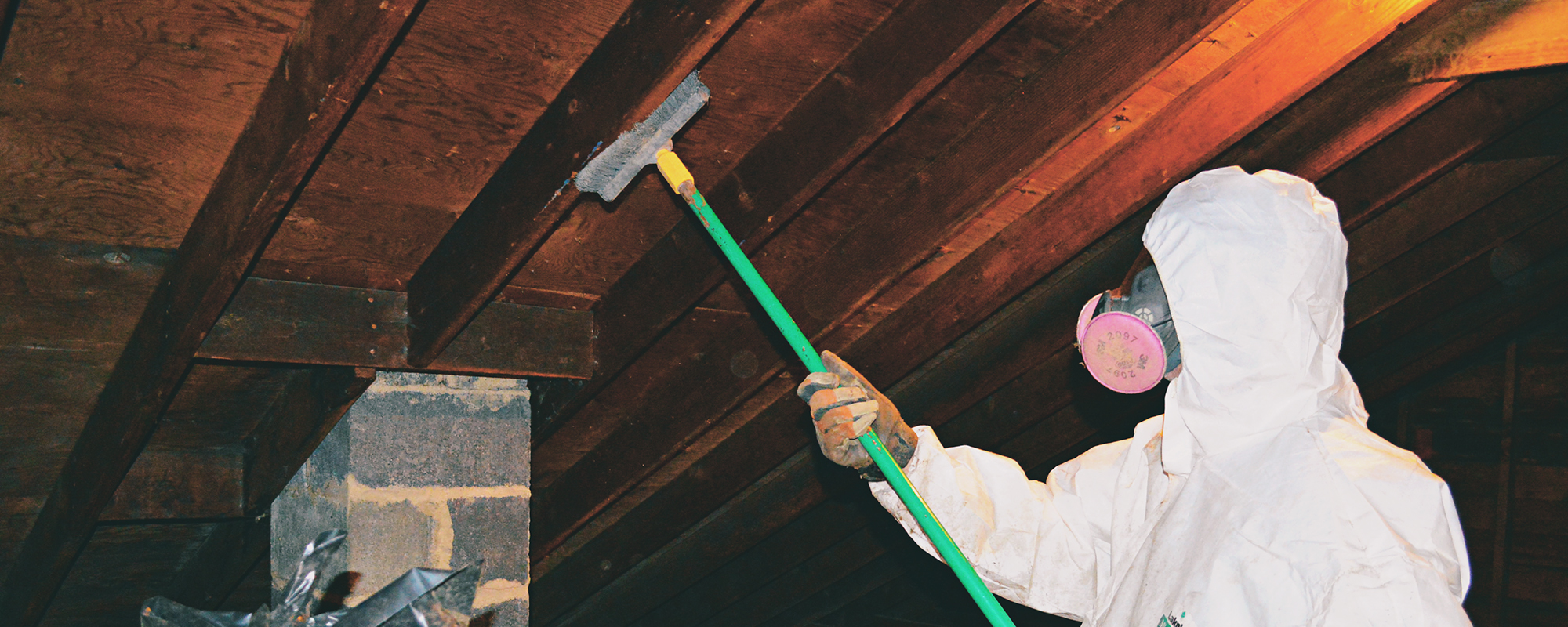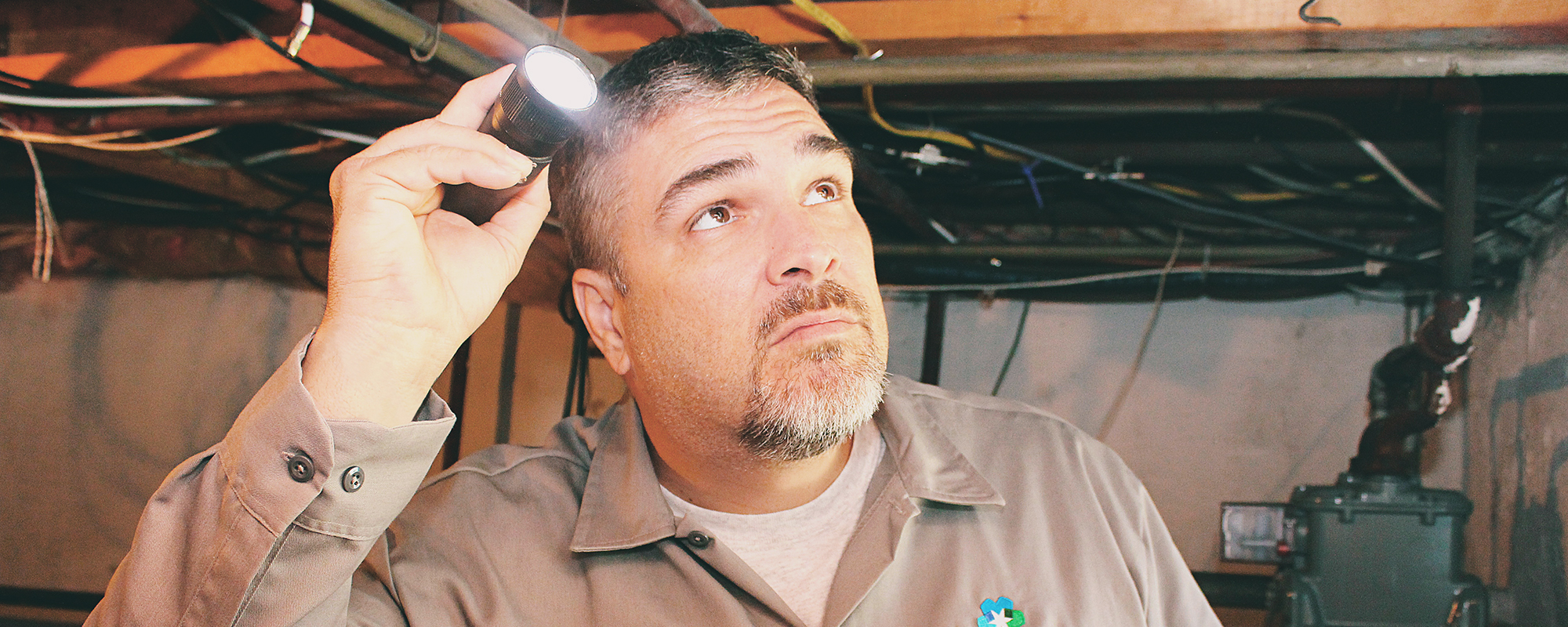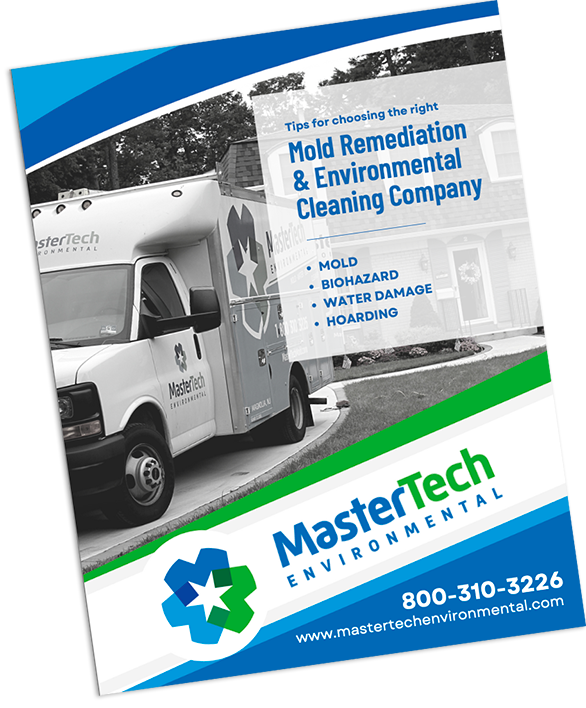
Attic Mold Prevention NJ
Prevent Attic Mold In New Jersey
Attics are one of the most common places for mold development. New Jersey attics can be very vulnerable to moisture buildup from excessive heat, high humidity, roof leaks, and lack of ventilation. In the presence of water, it only takes 24-48 hours for mold spores to germinate and spread to be a major contamination. Some simple attic mold prevention tactics will go a long way to help you avoid a costly mold remediation in the future.
Mold can spread and affect clean areas. Mold experts can contain the problem & safely remove it.
Why is Attic Mold so Bad?
Mold growth in your NJ attic can mean serious health problems and serious structural damage to your home or business. Certain species of mold have the potential to produce mycotoxins that are toxic to humans. Exposure to mold can result in symptoms ranging from mild allergies to serious upper respiratory problems. Each person will react differently to to the presence of mold. Symptoms vary depending on the individual, the length of time of exposure, the species of mold and several other factors.
The purpose of mold in the natural outdoor environment is to breakdown dead organic matter to be recycled back into the ecosystem. Now, imagine mold doing that to the building materials of your attic. Mold and the underlying water problem will eat away at the building structure and do some serious damage to your property.
What Causes Mold Growth in South Jersey Attics?
Aside from the obvious roof leak, moisture buildup in the attic can easily go unnoticed. As hot air rises in your NJ home, it collects in your attic. If an attic is not properly ventilated, it can be very vulnerable to excessive moisture buildup. Warm air in the attic can lead to condensation and elevated humidity.
Conditions that promote attic mold growth:
- Condensation
- Poor ventilation
- Excessive heat
- High humidity – over 55%
- Unaddressed roof leaks
- Fans and ventilation that empty into the attic rather than outside

Attic Mold Prevention Tips For New Jersey Property Owners
Consistent moisture control is the key to attic mold prevention.
Leaks – You should check your attic regularly for leaks or signs of leaks
Early detection can make all the difference when it comes to mold and water damage.
- If you spot signs of water intrusion from your roof or signs of damage that can lead to water intrusion, address it immediately. You may need to contact a professional to get to the bottom of the leak and stop it before it leads to mold development.
- Check all HVAC components and plumbing systems running through the attic for leaks or condensation. Even something as seemingly minor has condensation can lead to serious mold development.
- Water leaks need to be properly resolved before you develop a mold problem– it only takes 24-48 hours for mold to develop in the presence of moisture.
Roofing – Problems with your roof system can lead to major water intrusion and serious mold development
- Conduct regular assessments of your roof from the outside and from the inside. Deteriorating or missing shingles and damaged flashing are a couple of the key signs of NJ roof damage.
- If you are concerned about the condition of your NJ roof, you should have it inspected by a roofing professional.
- Make sure that all vents are free of any obstructions or damage. Clogged or damaged vents can lead to moisture buildup in your attic. Over time, moisture buildup from humidity or condensation will lead to wood rot, roofing problems, damaged insulation, and mold development.
Ventilation – Insufficient air circulation and ventilation is one of the most overlooked cause of attic mold
It is also one of the most common driving causes of mold development in NJ attics.
- Properly installed and sufficiently sized soffit vents, ridge vents and gable wall vents can promote air circulation and prevent moisture buildup in your attic.
- Make sure that all ventilation/fan systems from other areas of the home DO NOT empty into the attic. If this is the case, the air being emptied into the attic will cause moisture buildup if you do not know to combat it properly.
- To ensure that your attic is properly ventilated, you should consider contacting a trained professional to properly handle your vent system.
Insulation – Attic insulation minimizes heat loss or cool air loss, which will help to prevent elevated humidity and condensation
- Check the condition of your attic insulation regularly to ensure its effectiveness. Damaged insulation can be an indicator of water problems.
- Damaged insulation cannot do its job properly and will be ineffective in preventing moisture buildup. This will allow mold development.
- It is important to properly replace any damaged insulation as soon as possible.
- If your attic is not already insulated, you should consider hiring a professional to properly install insulation in the space.
- Be careful not to over insulate your attic. Too much insulation can interfere with controlled ventilation and end up causing mold growth.
Gutters – Regular gutter checks and maintenance
- Clean your gutters regularly– your gutters should be free of all debris to avoid backups. Overflowing gutters can lead to roof damage and serious water leaks into your attic
- During the cooler months, clogged gutters can easily freeze shut and cause excessive weight on gutter fasteners and create ice dam conditions, which can damage your roof system.
- To help prevent leaves from getting into your gutter, you can install gutter guards. But even with gutter guards, it is still good to make a habit of checking your gutters to make sure nothing gets lodged in the crevices.
Landscape – Your home’s surroundings are very important to keeping your roof safe and damage free
- Plant trees and large plants away from the home. Trees and bushes provide damp shade for moss and algae to grow on your roof. Damp shaded areas can hold moisture to a roof system’s surface, causing rot and deterioration.
- Trim branches away from your home. This will help limit the amount of damp shade areas on your roof. Neatly groomed trees and bushes will help to avoid scratching and gouging of the roof surface by branches. It will also limit the chance of loose branches falling into the gutters and causing a blockage.
Dehumidifier – Attic dehumidifiers can help to keep your NJ attic dry
If your attic is especially damp or humid, a dehumidifier can help.
- Make sure that you pick a dehumidifier that is the right size and capacity for the needs of that specific space to ensure effectiveness.
- Regular dehumidifier maintenance will help to preserve the quality and effectiveness of your unit.
Declutter – Attics are often used for storage
Cluttered spaces limit air flow and can promote moisture buildup (especially in already humid environments). Take some time to regularly organize and purge some of your stored items. This will open up your attic and help to optimize air circulation.
If you detect signs of a potential mold problem in your attic, contact a certified NJ mold remediation professional who will be able to safely and effectively assist you.
Need Help With Attic Mold? Call 609-948-8844 or Contact Us Now

If you identify signs of a potential mold problem in your attic, you should call a certified mold professional to schedule a mold inspection. A Mastertech attic mold inspection in NJ will determine if you have mold, how bad it is, what caused it, and how to safely and effectively remove it.
The NJ attic mold removal professionals at Mastertech Environmental will develop a tailored scope of work for you specific NJ attic mold removal. We will ensure the safest, most effective, and most efficient cleanup of your property. Each Mastertech mold remediation is backed by a 5-year, mold-free warranty. It is our promise that the mold has been safely and properly removed, and it will not return.

